I had a reclaimed stair stringer and I knew that it would be perfect for this tiered plant stand. I had the vision of exactly what I wanted it to look like in the end, and it really ended up just as I planned!
Reclaimed Stair Stringer Makes a Great Tiered Plant Stand
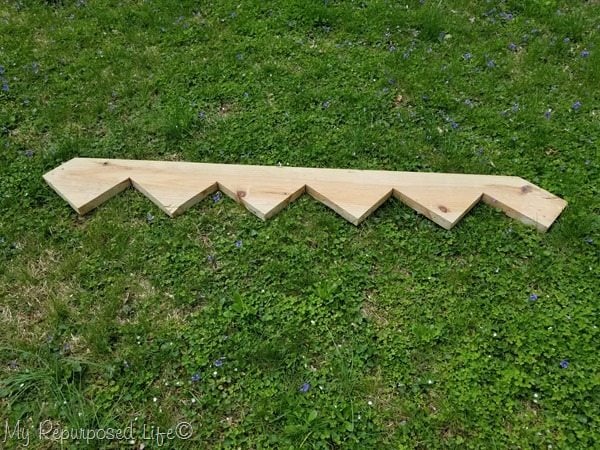
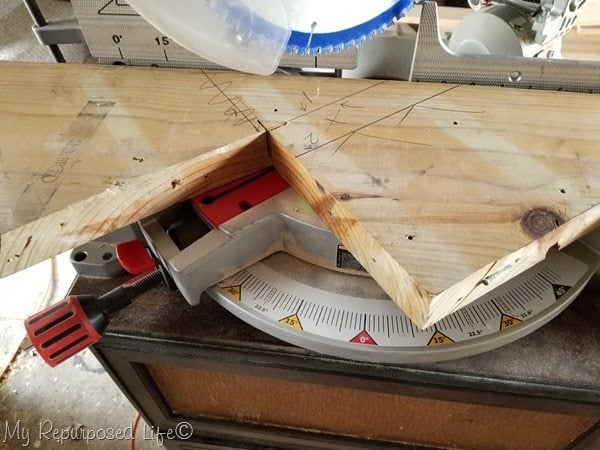
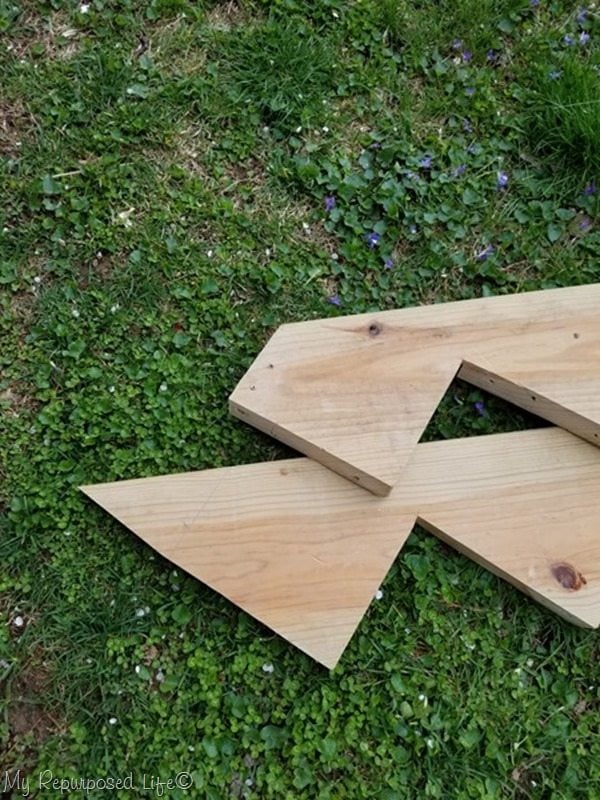
Start with two matching stringers
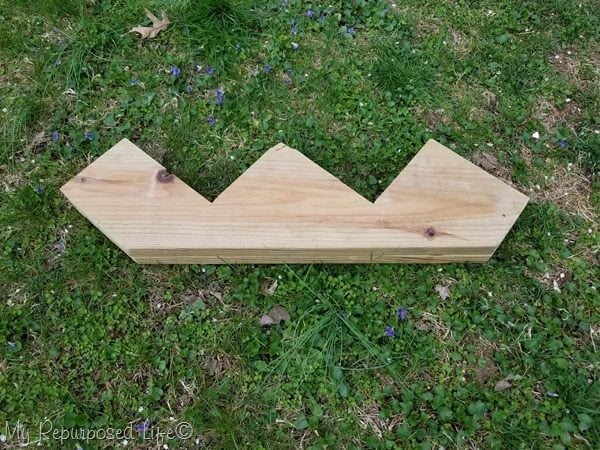
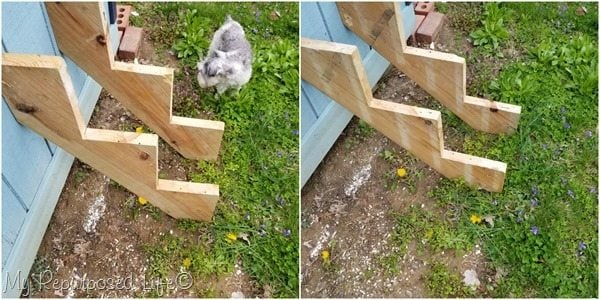
Materials to turn reclaimed stair stringers into a tiered plant stand
- Drill
- Nail Gun
- Brad Nails
- Wood Screws
- Scrap 2x8 lumber
- Scrap planks or 1x4’s
- Lattice or scrap rip cuts
- Paint
- Stain
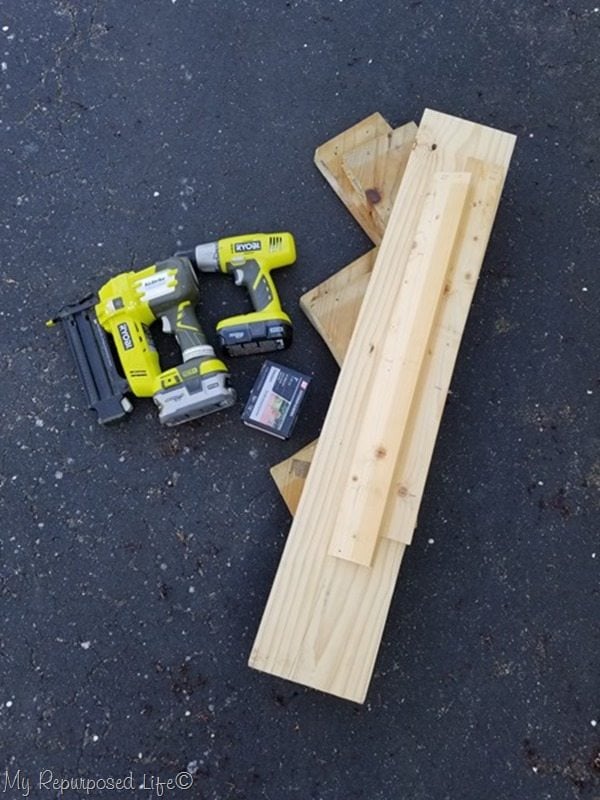
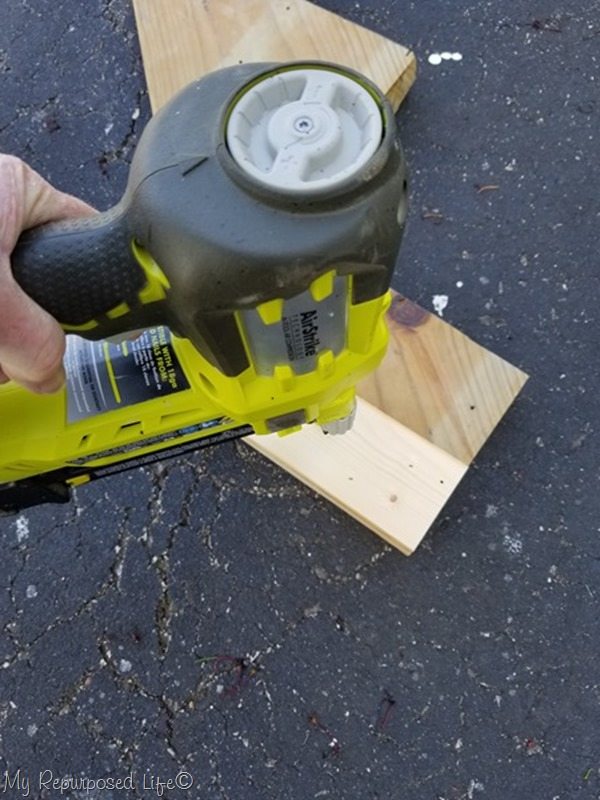
TIP: Using a nail gun to pop a few brads in place will easily help hold your boards together so you can secure wood screws. Brad nails are not strong enough to support this tiered plant stand.
Add back legs to stringer plant stand
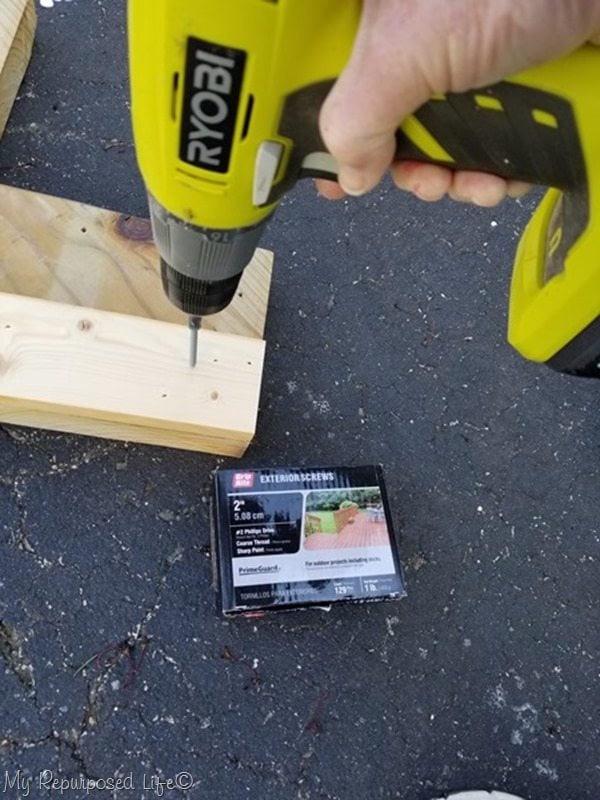
TIP: Be sure to flip second stair stringer over in order to get both back legs on the inside.
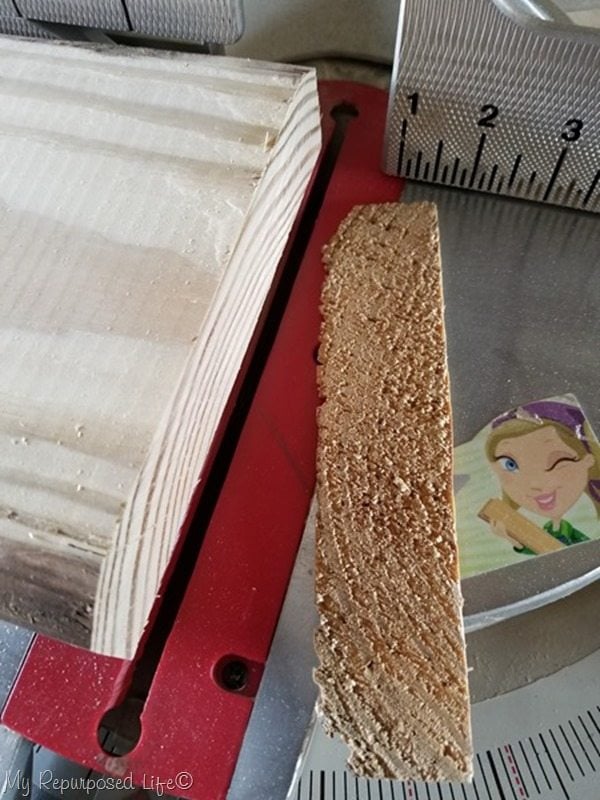
Tip: Always slice off the rough end of your lumber to make a clean cut that will accept paint and or stain better.
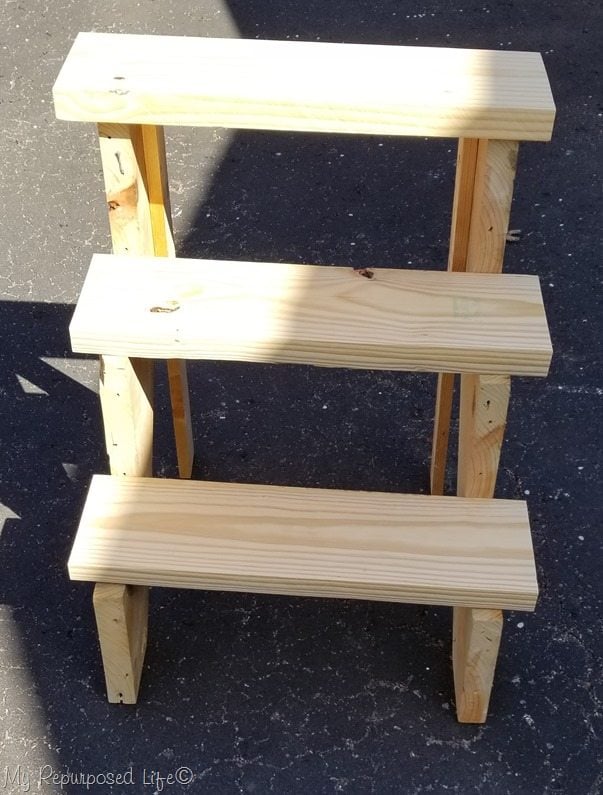
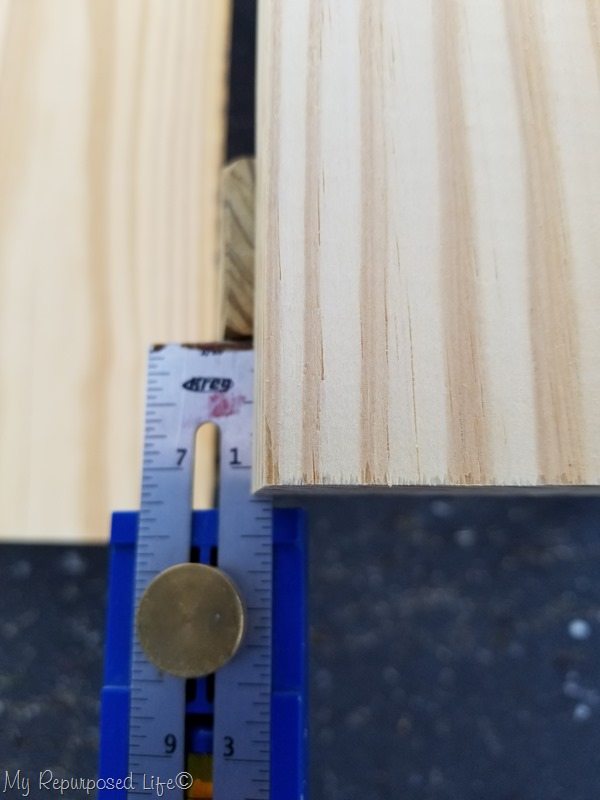
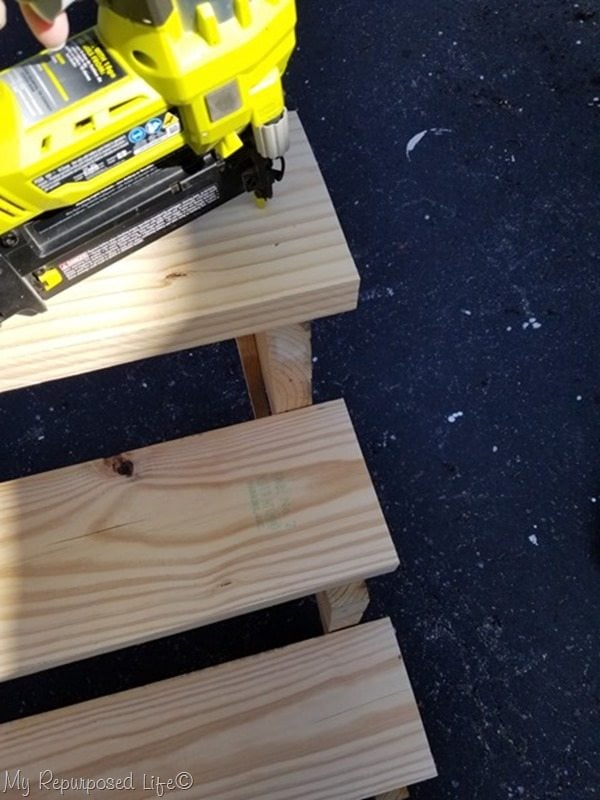
Attach treads to reclaimed stringers
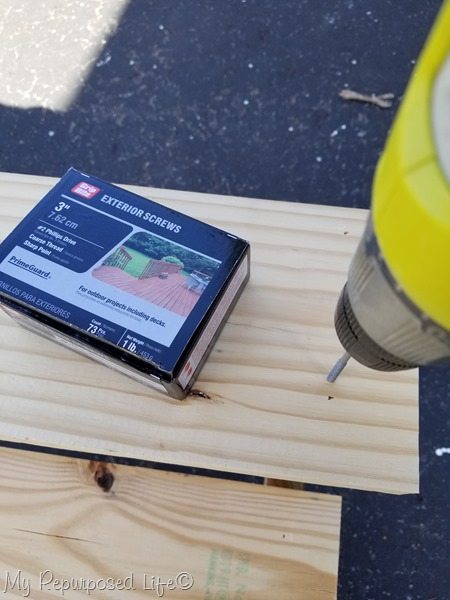
Attach back brace
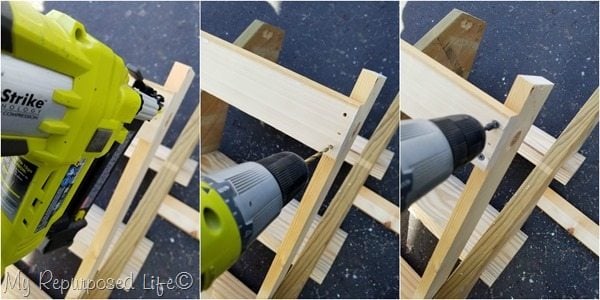
Tip: Drilling the pilot hole is a must when working so near the end of a board to keep it from splitting.
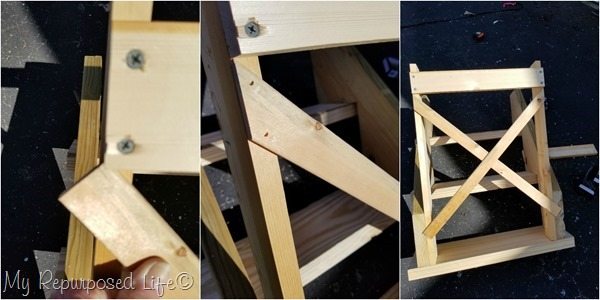

How to get an aged paint look on new lumber
.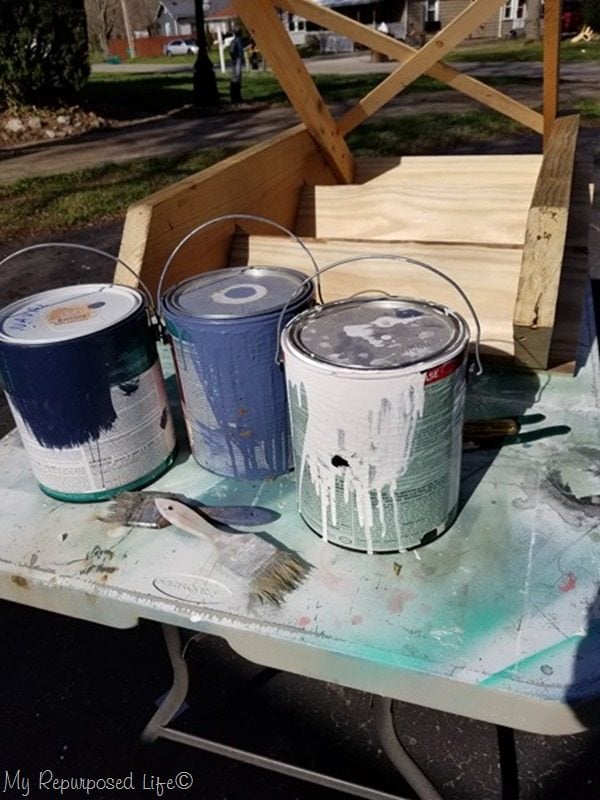
Tip: I like to begin painting my projects upside down.
Dry brush first (lightest) color
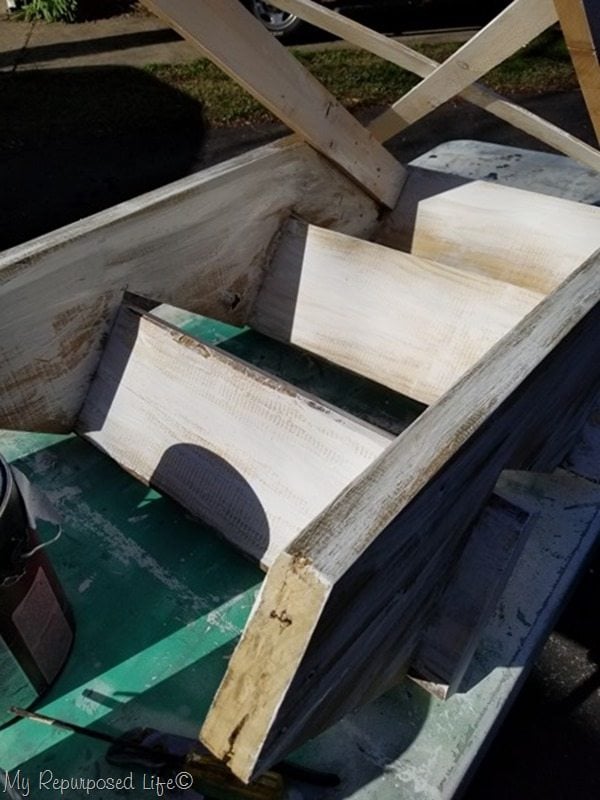
Add at least two additional paint colors
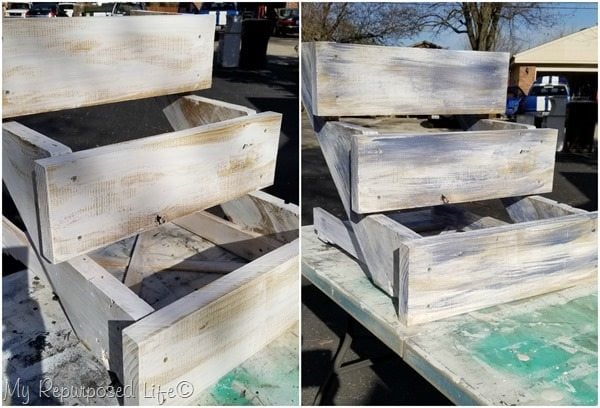
Sand paint off
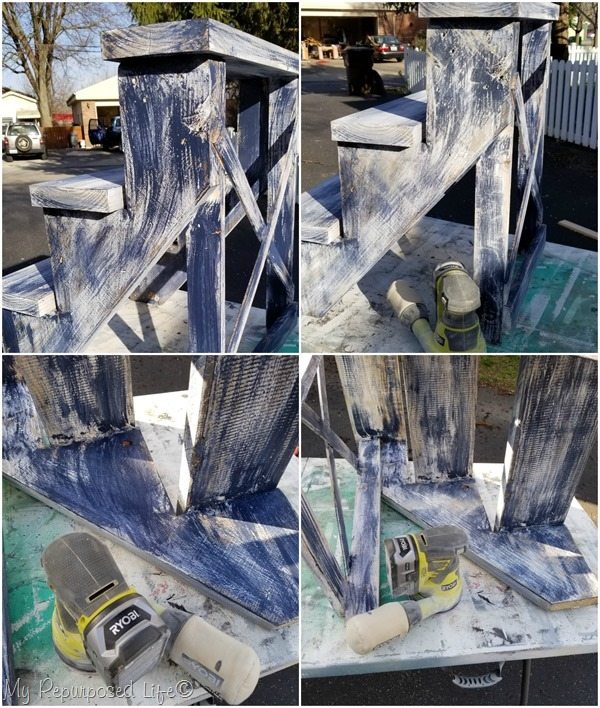
Add stain as a topcoat to complete aged lumber look
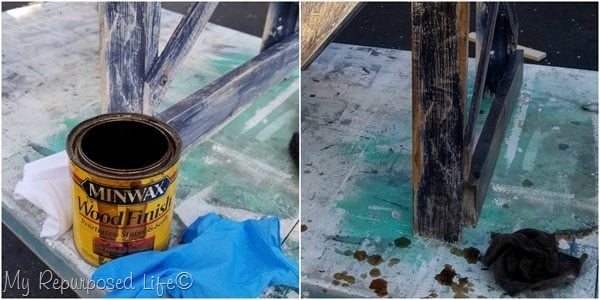
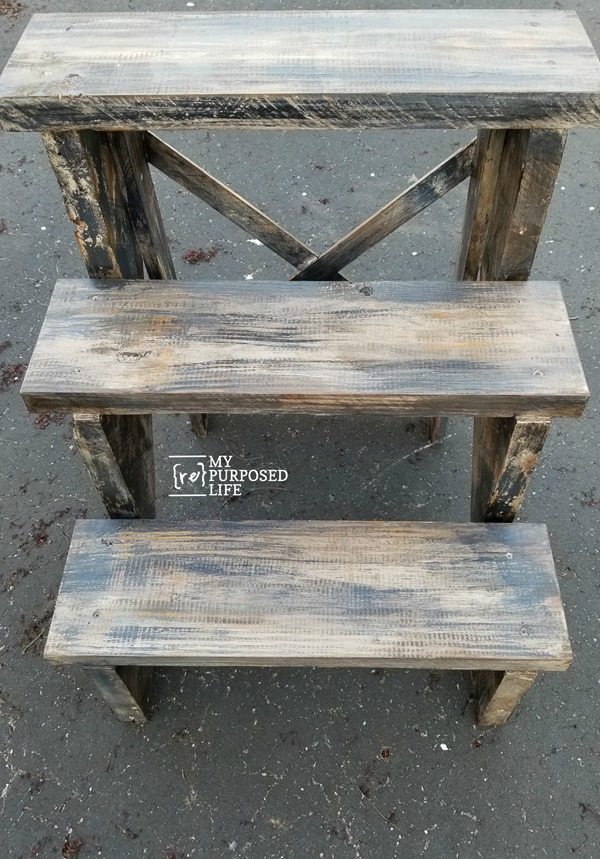
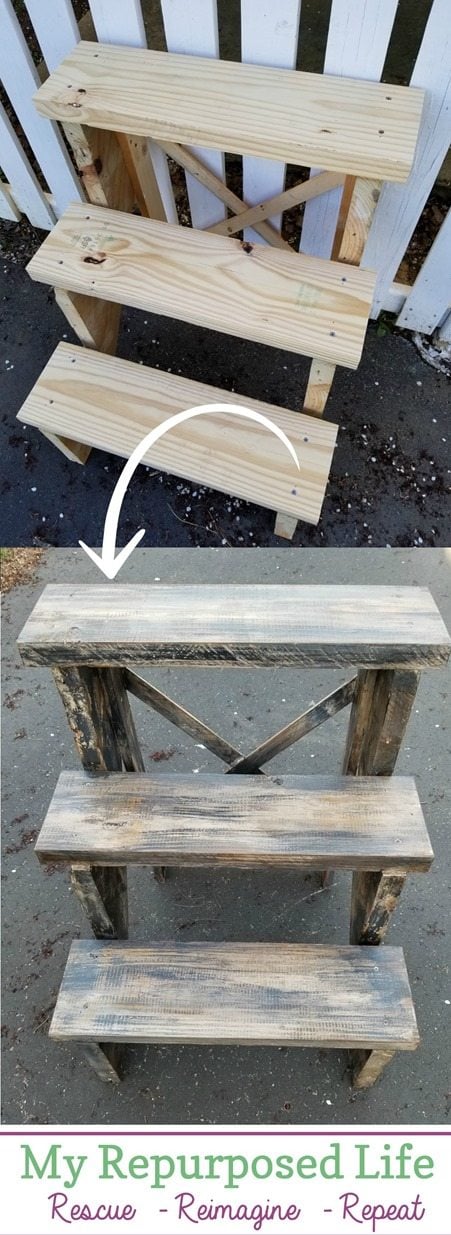
Isn’t it hard to believe it’s the same project before and after paint and stain?!
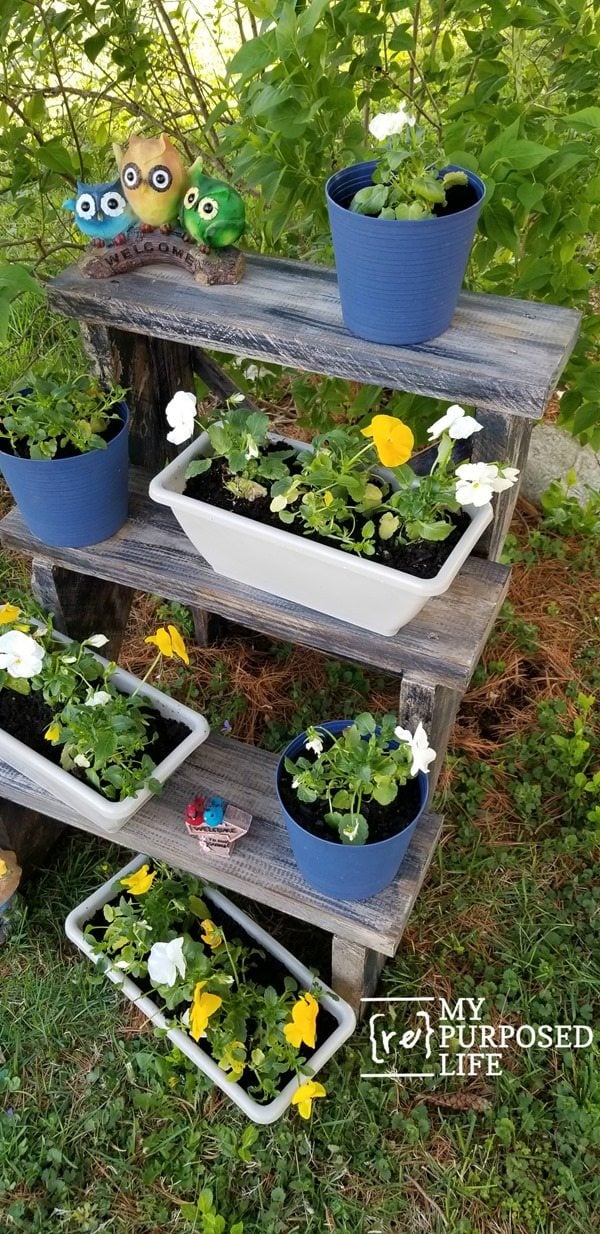
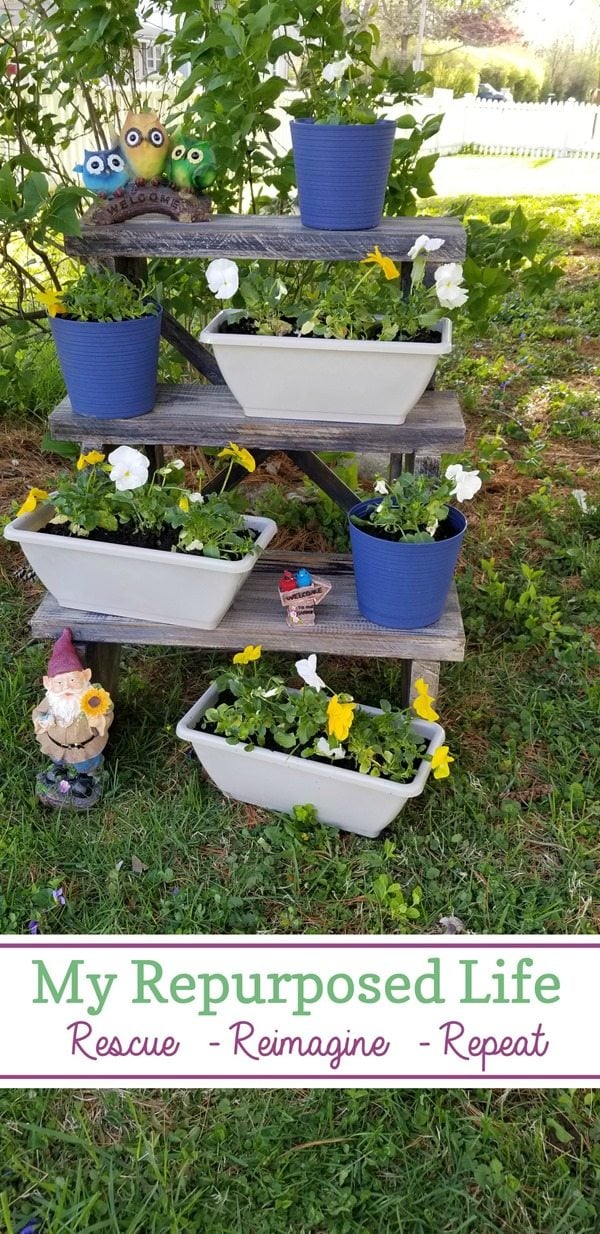
The small yard décor items are from Dollar General. I’ll be taking this to Vendors’ Village to sell at my booth.
See more plant stands on My Repurposed Life here.
Watch my video of How To Glaze Painted Furniture
This project is for this month's Power Tool Challenge Project. Hop over to this collection to see all the wonderful Spring Themed Wood Projects. (please note: many of these projects won't be live until 11 am EST. Please check back then)
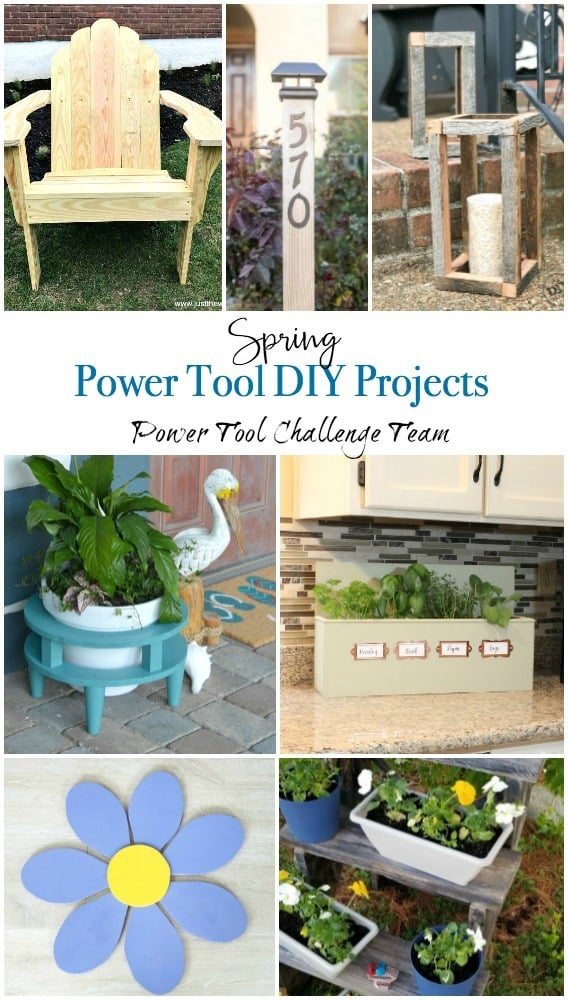
You won't want to miss all the other fun Spring Wood Project Ideas.
Gail Wilson is the author and mastermind behind My Repurposed Life. She is obsessed with finding potential in unexpected places and believes that with a little hard work and imagination, any old thing can be made useful again, including herself!
Gail reinvented herself during a midlife crisis and has found purpose again. She hopes you will find new ideas for old things and pick up a few tools along the way.
Wendi@H2OBungalow
What a super recycle project! Love the idea of using stair parts to make a plant stand. You alway come up with the best ideas! Pinned.. of course!
Paula
You come up with the best projects! I think this one will sell very quickly!
Maryann
Perfect Spring idea & I love the finish you used!